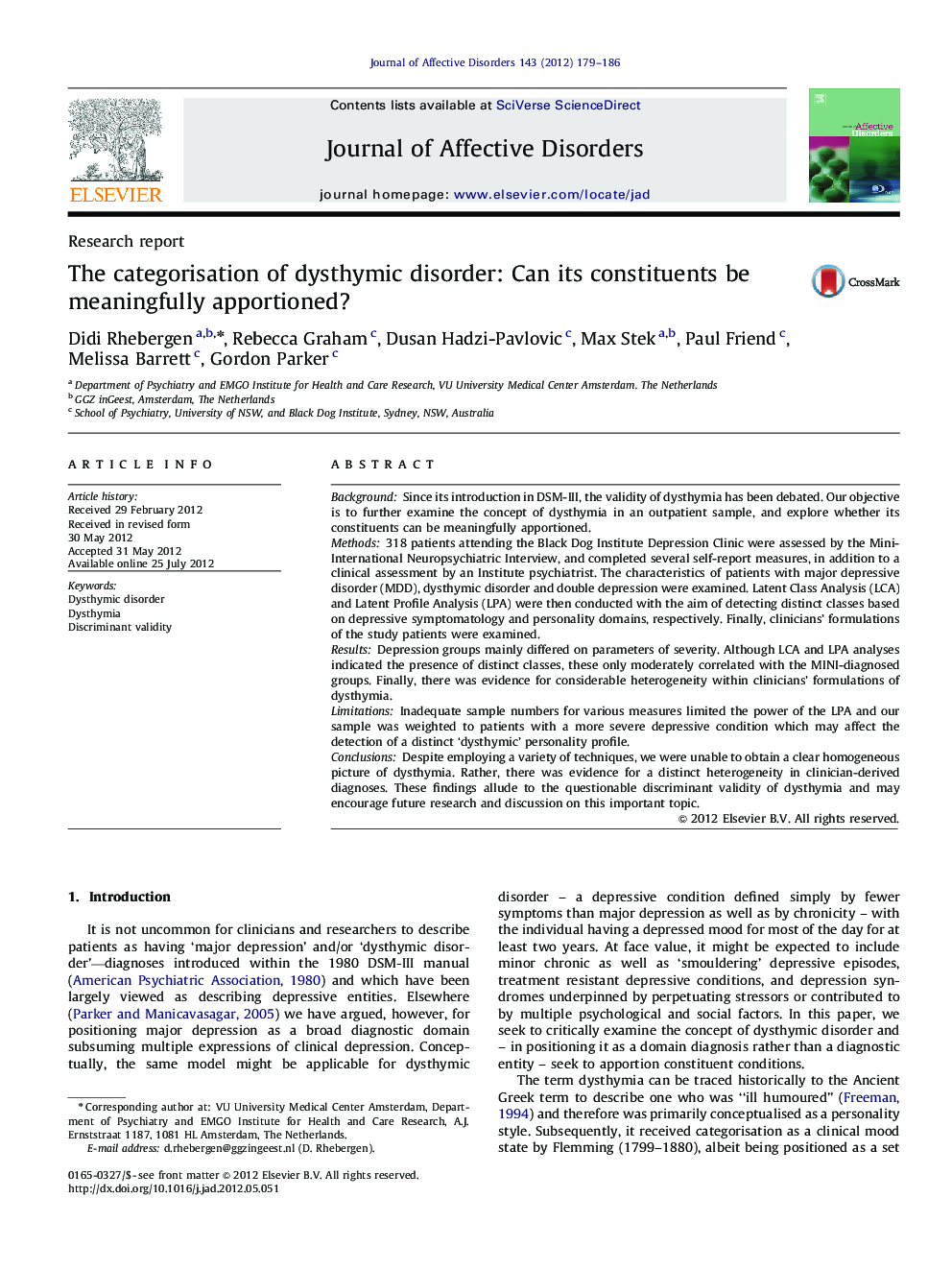| Article ID | Journal | Published Year | Pages | File Type |
|---|---|---|---|---|
| 4186134 | Journal of Affective Disorders | 2012 | 8 Pages |
BackgroundSince its introduction in DSM-III, the validity of dysthymia has been debated. Our objective is to further examine the concept of dysthymia in an outpatient sample, and explore whether its constituents can be meaningfully apportioned.Methods318 patients attending the Black Dog Institute Depression Clinic were assessed by the Mini-International Neuropsychiatric Interview, and completed several self-report measures, in addition to a clinical assessment by an Institute psychiatrist. The characteristics of patients with major depressive disorder (MDD), dysthymic disorder and double depression were examined. Latent Class Analysis (LCA) and Latent Profile Analysis (LPA) were then conducted with the aim of detecting distinct classes based on depressive symptomatology and personality domains, respectively. Finally, clinicians' formulations of the study patients were examined.ResultsDepression groups mainly differed on parameters of severity. Although LCA and LPA analyses indicated the presence of distinct classes, these only moderately correlated with the MINI-diagnosed groups. Finally, there was evidence for considerable heterogeneity within clinicians' formulations of dysthymia.LimitationsInadequate sample numbers for various measures limited the power of the LPA and our sample was weighted to patients with a more severe depressive condition which may affect the detection of a distinct ‘dysthymic’ personality profile.ConclusionsDespite employing a variety of techniques, we were unable to obtain a clear homogeneous picture of dysthymia. Rather, there was evidence for a distinct heterogeneity in clinician-derived diagnoses. These findings allude to the questionable discriminant validity of dysthymia and may encourage future research and discussion on this important topic.
